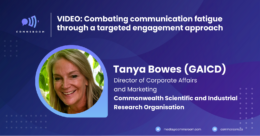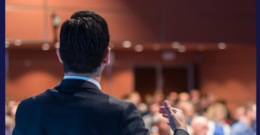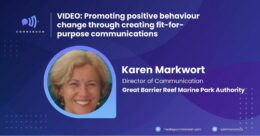With some practice, you can learn to control how others see you.
KEY POINTS:
- Developing a better understanding of body language can help us to communicate with intent.
- When we first meet someone, we quickly decide whether or not to trust them based on a few key factors, including body language.
- One way to quickly build trust and connection is to mirror the other person’s body language.
Why do we bother with the hard and imprecise work of trying to understand body language? After all, we’re already experts at it, more or less, with our unconscious minds, and those unconscious minds are faster, better, and infinitely more powerful human CPUs than our conscious minds. So why do the hard work of taking this unconscious expertise, making it conscious, and therefore (at least at first) worse, struggling with it in order to improve it, before finally shoving it all back down to our unconscious minds again when we stop thinking about it with our awake brain?
The reason is that it gives us a chance to develop a set of skills for reading other people’s body language and for controlling our own. In this way, we can become communicators with intent rather than leaving our communications to chance.
When we meet people for the first time, for example, our respective unconscious minds set to work developing answers to a set of questions that evolution has determined are important. Is this person a friend or a foe? Is this person someone who is more or less powerful than me? Is this person a potential mate or not? Does this person know what she’s talking about or not? And then, a little while into the relationship, the deeper and ultimately more powerful question: Can I trust this person or not?
So communicating with intent might mean, can I use body language to establish trust with this other person more reliably and more quickly than just leaving it to my unconscious mind and chance? It’s a question that salespeople, of course, should worry about, but also anyone giving a presentation since audiences want to know whether or not the person on the stage is trustworthy, and the answer to that question will determine whether they listen and buy into the message you’re purveying—or not.
Want to gain and share knowledge from other professionals within the industry? Check out our latest Comms Room events here.
Using body language to increase rapport and build trust

One way to increase the likelihood and speed of building trust is to mirror the other person you’re meeting or getting to know. It’s a phenomenon well-studied in the body language world. We see lovers, long-time friends, and co-workers who agree on something unconsciously mirroring each other on a minute-by-minute basis. It’s a way our bodies have of telling the other person, “Hey, we’re alike, we agree, we’re on the same page here.”
You can consciously mirror the relative stranger in front of you and thereby greatly increase both the depth and the rate of trust-building. It needs to be done with some subtlety and care, but it’s rare that the other person will notice unless you become hyperactive in your efforts and try to mirror every little twitch. Less is more here.
But what about during a presentation, you ask? How can you mirror an entire audience? Several ways. First of all, align yourself with the audience by moving down into them and facing back toward the stage as if you were one of them. Second, when you interact with individual members of the audience, during a Q and A, for example, you can mirror them. And third, you can act something out and get everyone in the audience to do it with you. Just make it relevant. You’ll raise more questions than you answer if you suddenly get the audience doing jumping jacks for no apparent reason.
The conscious study and use of body language for specific psychological purposes is demanding work, but the payoff is rich in stronger connections with the rest of the human race.
This article was originally published on the Psychology Today. Learn the art and business of public speaking with Dr Nick Morgan on Public Words.





























